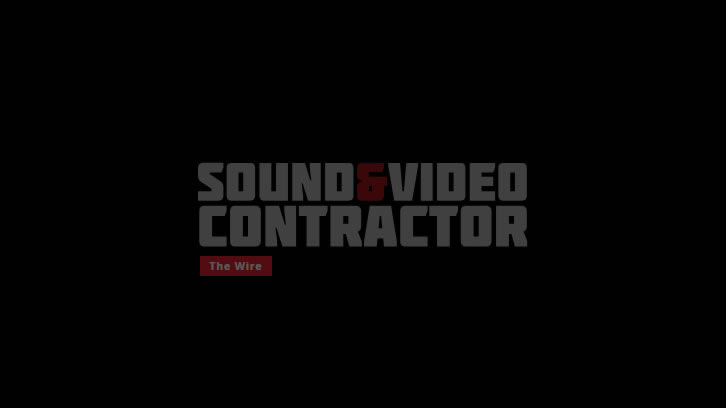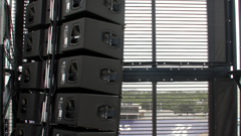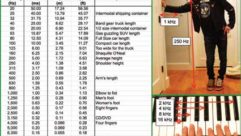
Brains Behind the Wall
Oct 1, 2008 12:00 PM,
By Jay Ankeney
Designer David Niles explains the design and development of Comcast Center’s gigantic LED display.

The 83’x25’, 10-megapixel videowall in Philadelphia’s Comcast Center features a series of photorealistic images playing on 6,771 Barco NX-4 4mm LED modules.
If you listen carefully, you can almost hear the videowall in the lobby of Philadelphia’s Comcast Center thinking.
For 18 hours a day, the giant 83ft.-wide-by-25ft.-high, 10-megapixel display provides the approximately 10,000 people who walk daily through the seven-story glass atrium with an unending — yet endlessly varied — parade of stunningly photorealistic images generated by a content-creation system with a complexity that approaches artificial intelligence.
The videowall is composed of 6,771 Barco NX-4 4mm LED modules in a seamlessly flat 800-tile installation that is draped over three cutouts accommodating the lobby’s elevator banks. The fundamental genius of the videowall’s design is that the display surface itself is intended not to be seen at all. Its creator, high-definition technology pioneer David Niles, has given the background on the LED array the exact same look as the 9’×10′ maple wood panels adorning the surrounding walls. That way, images generated on the videowall’s screen can appear to be floating in front of the wall itself.
In an era that sees corporate logos splashed over everything from sports stadiums to concert halls, it’s refreshing to note that the videowall lobby installation was conceived by Comcast’s chairman and CEO, Brian Roberts, as a gift to the people of Philadelphia.
To bring it to life, Roberts and the owner of the building, Liberty Property Trust, turned to Niles because of his proven history of being able to work magic with HD display technology that no one else has even attempted. After all, Niles established the first modern HD production studio in 1985 in Paris. After moving to Manhattan, he later employed HD acquisition and post to create music projects for the likes of Tony Bennett, Mick Jagger, and Aerosmith. Niles has also produced highly acclaimed HDTV installations at such places as Macy’s Herald Square and Madison Square Garden in New York. He has used his HD wizardry on numerous TV entertainment and commercial productions, and he has been awarded the Chevalier des Arts et Lettres from the French Minister of Culture and an Emmy nomination from the Academy of Television Arts & Sciences.
Comcast and Liberty Property Trust came to the Niles Creative Group asking its founder to conjure up a lobby experience that would provide a magical environment capable of inspiring and informing passers-by with a longevity that would extend its appeal well into the future.
PLANNING AND IMPLEMENTATION
The criteria Niles set for himself were daunting.
“First, I wanted the wall to be photorealistic so the viewing experience would approach reality,” he says. “Second, since the atrium is open to the skylight, the display had to be able to stand up to daylight. Therefore, a projection system was out. And third, we needed to find a technology for the content-creation system behind the wall that could be almost maintenance-free by operating mostly on its own.”
In 2005, Niles installed a large LED display as the backdrop for stage productions at Radio City Music Hall, so in February 2007, he invited several major manufacturers to conduct a side-by-side LED screen shootout. Each system had advantages and disadvantages, but by March 2007, Barco’s NX-4 4mm LED modules were picked.
The wall was to be suspended from a massive, steel box header beam bolted to the underpanels of the floor above, with tie-backs from the rear of the wall to the building’s concrete core to stablize the wall vertically. Other than those tie-backs, the wall is completely independent from the rest of the building to so it can freely expand and contract with changing temperatures. The header beam went up in October 2007, and Barco started hanging the tiles in March 2008, completing that phase by early May. During the whole installation process, the wall was hidden from public view behind a paper curtain.
“It was a pretty extensive evaluation process,” says Steve Scorse, vice president of events at Barco. “With no rear access, everything had to be serviced from the front of the wall. Nobody had ever hung a videowall this size before, and we were scaling the project up from a 100-tile demonstration to a custom 800-tile installation with a hidden support structure that has to hold up to 28,000lbs. of LED modules. Fortunately, Barco’s depth of engineering experience was extensive enough to handle the challenge.”
Brains Behind the Wall
Oct 1, 2008 12:00 PM,
By Jay Ankeney
Designer David Niles explains the design and development of Comcast Center’s gigantic LED display.

HD technology pioneer David Niles and his production team used a Panasonic AJ-HPX3000 camera to capture bluescreen footage for the wall. The footage was recorded to 10-bit uncompressed computer RAID storage and backed up to DVCPRO HD tape.
Part of the installation’s constraint was that the videowall had to be hung while the Comcast Center’s construction was still being finished. So, for three months, the contractors hired by Barco could only start work at 8 p.m. and had to have their lifting equipment and scaffolding cleared out by 6 a.m.
They also had to deal with the fact that, due to the lobby’s changing level of ambient daylight, the wall only has to put out 200 nits of illumination at night, but needs to increase to 1,200 nits in the afternoon. A mechanism inside the wall accommodates this need by constantly adjusting the wall’s brightness. To compensate for the heat generated by these power consumption variances required by the LEDs, eight air-conditioning fingers run down the back of the screen in an artificially created plenum. These maintain the wall’s temperature within tolerances that prevent expansion and contraction gaps from appearing between panels.
By the beginning of May, the LED modules were turned on, and Niles began an extensive testing process to set their uniformity, brightness, and performance continuity. Niles’s team had been putting the wall’s content-creation system together in the Niles Creative Group studios back in New York. They transported it to the Comcast Center, where it was installed May 15, 17, and 18.
THE CONTENT
Niles wanted the content on the wall to be ever-changing to maintain a sense of surprise for the viewers during the few minutes they are walking through the lobby. He came up with the idea of using families of background images, which he refers to as “content buckets,” and decided to have a set of repeating life-sized human characters play on top of them. A cast of up to 22 performers, including 10 main personalities, was chosen to represent the “Philadelphia everyman doing extraordinary things” during production of the original content for the wall, as Niles explains it.
Sometimes these people are swinging from a trapeze over the wall. Others may be riding past on a giant pencil. Since images of these characters appear at random times over changing background scenarios, this adds to the videowall display’s complexity. The cast has become quite popular to repeat visitors to the building, much like characters on a TV show or movie.
Niles determined that the wall’s content would exist in four different worlds. Since the background of the display mimics the surrounding walls, it can be made to look invisible so the images in front of it appear, in his terms, “behind the screen.” A second world plays on the screen itself in what he calls “the flat world.” Then a third world can exist in a visual space that seems to be about 4ft. in front of the wall, and that is where most of the characters play. The fourth world won’t be presented to the public until a special Christmas display takes over the wall during the upcoming holiday season.
The background scenarios, which can vary from a wilderness landscape to dazzling NASA images from space, are scheduled to coincide with the time of day as the pattern of skylight in the atrium advances with the hours. At 10 a.m., visitors may see stock-market quotes included in the parade of images, while in the afternoon, an airplane may fly over a forest panorama trailing a “Good Afternoon” banner. As you’d expect, the nature scenes track the changing seasons.
Having a 10-million-pixel display upon which to paint his images, Niles used three HD cameras to shoot the super-wide nature panoramas. He actually employed several of Sony’s HDV models, sacrificing a bit of HD’s ultimate recording resolution in favor of field-production economy and ease of mounting on a triple-camera rig. However, when they are stitched together, this gives his combined images three separate vanishing points — a distinctive perspective that has to be seen live to appreciated, especially when the cameras pan or tilt in unison.
Brains Behind the Wall
Oct 1, 2008 12:00 PM,
By Jay Ankeney
Designer David Niles explains the design and development of Comcast Center’s gigantic LED display.

To ensure the same sequence is never repeated, content is fed through a Dataton WatchOut and MediaSonic servers and a Medialon scheduler to the Barco Encore presentation system.
But to shoot his cast of characters, Niles and his production team, including co-director/choreographer John Dietrich and producer Emmora Irwin, chose Panasonic’s AJ-HPX3000’s native 1080p one-piece P2 HD camcorder with its ability to record to 10-bit uncompressed computer RAID storage, along with backup recordings to DVCPRO HD tape. To facilitate their subsequent chroma keying, the characters were shot in front of blue- and greenscreens last fall in several studios around the New York and New Jersey area.
Life-sized human characters don’t require 10-megapixel resolution for reality emulating video capture. In fact, Niles calculated that 2 million pixels would suffice for the photorealistic effect he wanted. Therefore, the 2.2-megapixel resolution of the HPX3000’s CCDs provided a 1:1 pixel ratio for his human characters. After editing his material using proxies on an Apple Final Cut Pro workstation, the result was laid out on an Adobe After Effects 10-million-pixel canvas, which let him maintain the 1:1 pixel relationship from camera to screen.
ON WITH THE SHOW
Then, all of the parameters Niles created in his edit room were rendered in six 1920×1080 segments and exported to a battery of 24 active HD servers from Electrosonic and Dataton, each with RAID storage to ensure data redundancy and two sets of backups. The scheduling system itself came from Medialon, which was programmed by Alan Anderson. Each scenario is played out from six high-definition servers delivering HD pictures combined to form the wall’s 10-megapixel resolution. Once they are mapped on the display, the six HD elements are presented in a smooth, seamless continual image.
Scenarios are constructed initially from conditional layers off the Dataton WatchOut servers, which are progressively composited to provide maximum display flexibility as directed by the Medialon scheduler. Then, the Electrosonic servers feed a Barco Encore presentation system so the servers function like a jukebox holding hundreds of clips of material that can be combined and played out in an ever-changing sequence. Using the artificial-intelligence paradigm, this prevents the same sequence from being repeated in an identical scenario.
Finally, a third system of Electrosonic servers is ready to present prebuilt scenarios. These servers’ primary function is to fill in whenever the rest of the system needs to be down for maintenance. Lobby personnel also have access to touchscreens that can control these servers in case a specific series of images need to be presented for special occasions. For example, if the Comcast Center is hosting a visiting VIP, these on-call scenarios can be displayed on the videowall to be shown to the dignitary at a specific time.
The complex visual display on the videowall is accompanied by audio from four sets of JBL Control 5 loudspeakers behind the screen driven by Crown CTs 8200 amplifiers. Twelve audio channels from the content delivery system fill the lobby with sound, often including appropriate sound-effects panning with the images moving across the LED panels. There is also a wide bank of various JBL loudspeakers and subwoofers embedded in the atrium’s ceiling and four sets of TOA SR-S4L line arrays in the front of the lobby.
Every visual scenario has its own custom-composed music accompaniment put together in the sound studio at the Niles Creative Group. The melodies are a combination of unique tunes written by Niles and his collaborator, Jim Murphy, although they are often combined with elements from several stock-music libraries.
June 6 of this year heralded the official opening of Comcast Corporation’s new corporate headquarters and the revelation of its public art videowall installation to the public. Since then, through press time, the content-delivery system had delivered more than half a million different scenarios without a minute of down time, except for scheduled building maintenance requirements.
One of the most popular images on the Comcast Center’s videowall is an elaborate clock that occasionally assembles itself on the screen and then displays the proper time. But due to Nile’s puckish sense of humor, it never appears directly at the top or bottom of the hour.
“There is no purpose in putting the time up when Big Ben would strike the hour,” he says. “Everyone knows when that is. But the way we do it in an unpredictable fashion, it gives life to the space. And life is not always predictable.”
“It’s all about content,” Niles says while monitoring the Comcast lobby and his videowall on a webcam from his office. “I can’t tell you how thrilling it is to see a couple of hundred people stopping to watch the images on the wall while smiles break out on their faces. It’s show biz. That’s what I do.”









